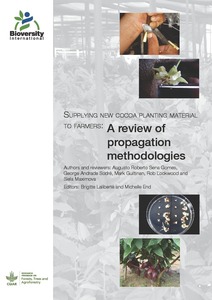foresterie
AGROVOC URI:
Supplying new cocoa planting material to farmers: a review of propagation methodologies
The review, coordinated by Bioversity International, presents an impartial, evidence-based review of cacao propagation methods, to serve as a basis for the assessment and implementation of strategies for providing farmers with quality planting materials, adapted to current and future needs (cultural, institutional, technical, environmental and financial). It describes the various propagation methods available for the production and supply of large numbers of cacao plants to growers.
Supporting good traditions
Namo Chuma, of the NGO Environment Africa, explains how traditional arrangements have protected trees in Zimbabwe, and how a new piece of legislation could empower communities to protect their forests against illegal exploitation by commercial interests.
The assessment and monitoring of forest resources and forestry products statistics in China
The forests of Setulang and Sengayan in Malinau, East Kalimantan: their potential and the identification of steps for their protection and sustainable management
The impacts of forestry decentralization on district finances, local communities and spatial planning: a case study in Bulungan District, East Kalimantan
The report describes the impacts of forestry decentralization on district finance, local communities and spatial planning, drawing on an 18-month research project in Bulungan District in East Kalimantan Province. It describes forestry management policies following the implementation of regional autonomy, and their impacts on district revenue and local livelihoods. The authors analyze district spatial planning, forest land use and community control over forest lands.
The impacts of decentralisation on forests and forest-dependent communities in Malinau district, East Kalimantan
Malinau District, established through partition in 1999, is the largest district in East Kalimantan and contains some of its largest tracts of forest. With decentralization, the district has sought to generate revenues from its forests, but these efforts have been handicapped by a concurrent lack of institutional capacities to manage rapid forest exploitation and conflicts over claims. Timber extraction and utilization permits (Izin Pemungutan dan Pemanfaatan Kayu or IPPK) have been the main instrument for revenue generation, with 39 IPPK covering 56,000 ha.



